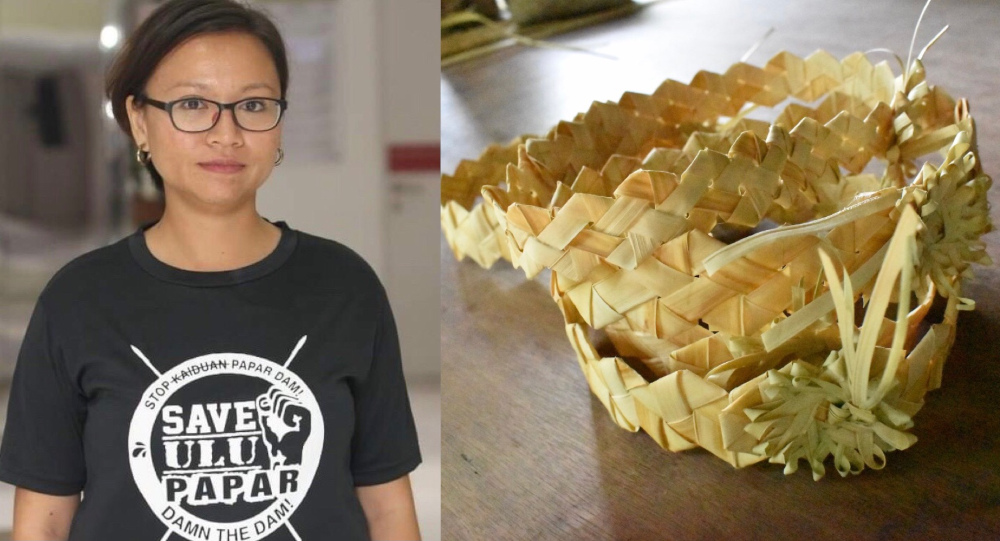PETALING JAYA, Feb 18 — For communities whose lives are so closely tied with nature, there is no room for climate change to be just another topic up for friendly debate.
Indigenous communities around the world are always among the first to have their traditions and livelihoods devastated by global warming and shifting weather patterns.
The Orang Asli in Malaysia are no exception and this has spurred Klima Action Malaysia (Kamy) to help our indigenous people fight the climate crisis and safeguard their livelihoods.
The climate activist group has teamed up with Gerimis Art Project (GAP) and UK-based organisation Students for Global Health (SfGH) for the “Weaving Hopes for the Future” project, which will focus on a mentorship programme to cultivate leadership and organisational skills in Malaysian indigenous communities, particularly women and the youth.
Through the project, Orang Asli participants will create an art installation and other creative works inspired by the climate crisis and its impact on their daily lives.
Their creations will be shown to the Malaysian public and an international audience at the 2021 United Nations Climate Change Conference (COP26) online and in-person at Glasgow, Scotland this November.
Kamy, GAP, and SfGH scored a big win recently after they secured part of a RM166,000 grant from the British Council under the A.R.C. Challenge Malaysia Grant earlier this month.
Kamy’s chairperson Ili Nadiah Dzulkafar told Malay Mail that the grant has given them a boost in their efforts to empower the Orang Asli community in their fight to protect Mother Nature.
She added that art holds the key to getting an emotional response from the public and fix their attention on the wounds inflicted on our environment due to pollution, land degradation, and more.
“Viewing climate change through art is an element that has been missing in the climate discourse in Malaysia.
“Communicating climate change has taken a very scientific and technical approach that (can make) the average person shy away from actively participating in the most defining issue of our time.
“We want to paint the climate crisis as more than just statistics and climate models, but illustrate the consequences and struggles that the rakyat is already experiencing,” said Nadiah.
Protecting traditions handed down through generations
Members of GAP, a group that provides a platform for Orang Asli artists, photographers, weavers, and key community members, witnessed the consequences of climate change first-hand when they visited Pos Lenjang in Lipis, Pahang last July.
GAP co-founder and coordinator Wendi Sia told Malay Mail that one Orang Asli family was unable to plant the heirloom seeds handed down from their ancestors due to an environmental disaster that ravaged houses and infrastructure in the area.
“When we were there at the end of July 2020, one of the families could not clear the land for their traditional paddy planting because of the unpredictable heavy rain that brought in the kepala air (water column) that destroyed the Pos Titom-Pos Lenjang bridge.
“It was the month of July when it was supposed to be hot and dry and it is a customary practice to prepare the land in the seventh month.
“Then, every new year in January is the harvest season, but the conditions of dry and wet seasons shifting means generations-old traditions are threatened,” said Sia.
This is just one of many stories that show how indigenous people are critical stakeholders in the decision-making process on environmental policies due to their connection with the natural world.
Nadiah and Sia hope that “Weaving Hopes for the Future” can inspire Orang Asli youth to speak up on the climate emergency and fight for a world that allows their culture and traditions to survive.
“The project has a long-term vision of having indigenous youth reclaiming their space as leaders in the Malaysian climate movement.
“It is the upcoming generation who will endure the devastating brunt of climate change, and especially the Orang Asli, whose lands are the marks of their identity and the legacy of their arts, culture, and tradition,” said the duo.
SfGH’s secretary Amiteshwar Singh holds similar goals for the project to influence decision-makers at COP26 and make concrete steps towards safeguarding the climate.
This also pushes them towards their wider goal of achieving global health equity, particularly amongst marginalised groups.
“Through education of climate governance and capacity building within our shared member base, we also want to empower the youth to raise their voices,” said Amiteshwar.
Kamy, GAP, and SfGH were announced as the recipients of the British Council’s A.R.C. Challenge Malaysia Grant during the A.R.C. Challenge Malaysia Forum 1 — Youth, Climate Change and Cultural Rights virtual event held earlier this month.
The event was attended by British High Commissioner Charles Hay and Professor Joy Jacqueline Pereira from Universiti Kebangsaan Malaysia, as well as a host of attendees from youth groups, students, non-governmental organisations and the general public.
Other recipients of the grant included neOOne Associates and SEA International CIC’s “Visioning The Future and Storytelling for Climate Change” project and Biji-Biji Initiative and Falmouth University’s “Ripple — Responsible Innovation Plastics Project for Life and Environment.”
The three partnerships will be presenting their projects at a second forum slated to take place March 25, 2021.























